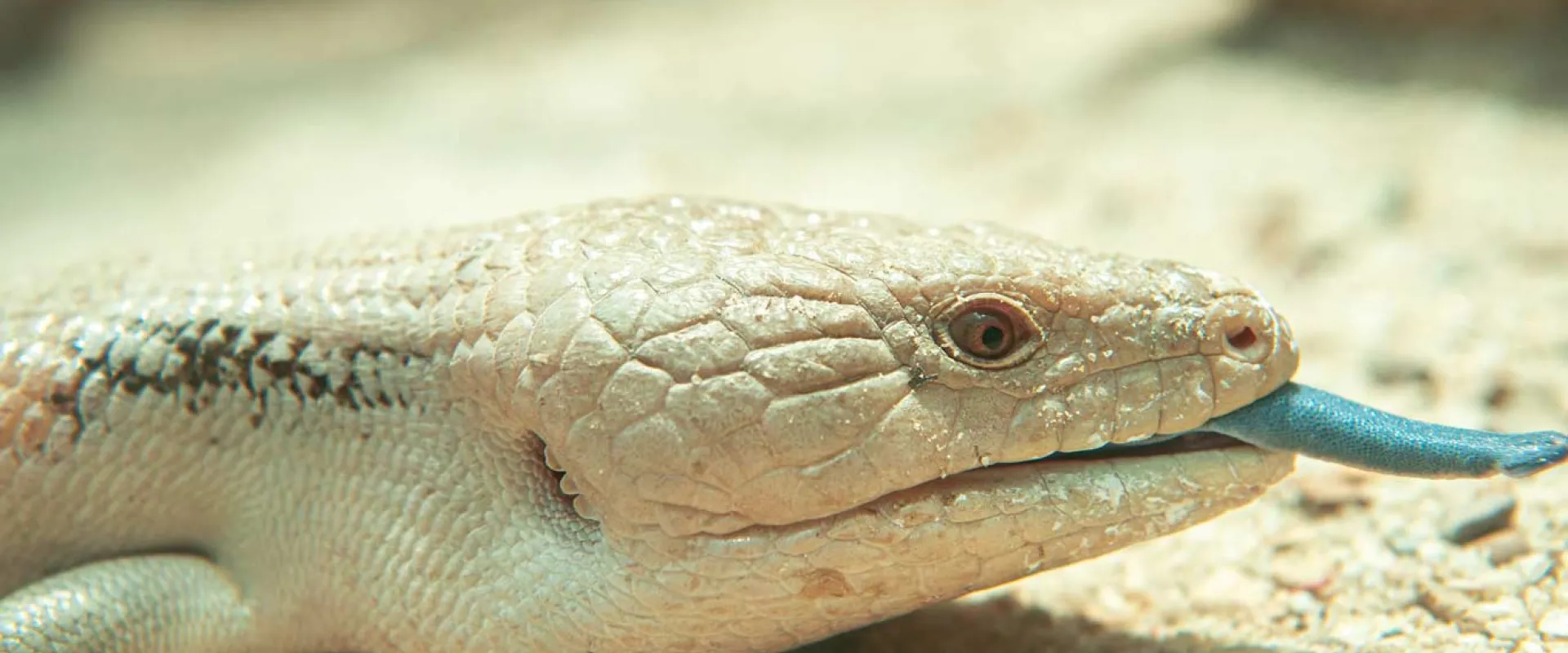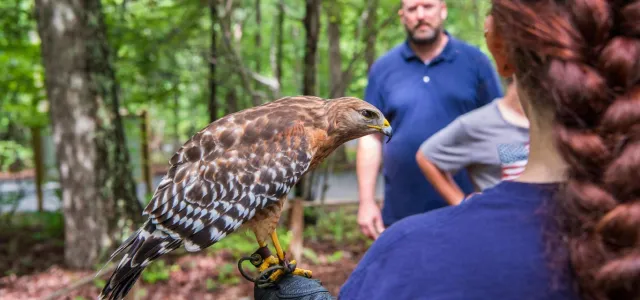Did you know blue-tongued skinks are ovoviviparious, meaning eggs hatch in the mother and she gives birth to live young encased in a placenta? Learn more about blue-tongued skinks.
Surprisingly good climbers, skinks use several climbing areas and tight crevices in their Zoo habitat as they would in the wild. We provide ledges for them to hide under and rocks in natural sunlight for basking. Lightbulbs that emit UV are present for their health care.
- Males and females are solitary, except during mating season.
- They feed on insect larvae, snails, slugs, plants, and fruit during the heat of the day and are less active at night and during winter when it is colder.
- When threatened, they will stick out their blue tongue, hiss, and lie flat on ground so their body looks larger.
- Extinct in Wild (EW)
- Critically Endangered (CR)
- Endangered (EN)
- Vulnerable (VU)
- Near Threatened (NT)
- Least Concern (LC)
- Not Evaluated (NE)



